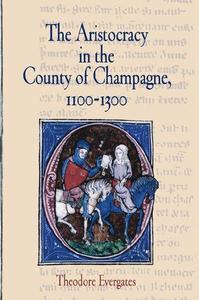
The Aristocracy in the County of Champagne, 1100-1300 By Theodore Evergates
2007 | 424 Pages | ISBN: 0812240197 | PDF | 15 MB
Theodore Evergates provides the first systematic analysis of the aristocracy in the county of Champagne under the independent counts. He argues that three factors - the rise of the comital state, fiefholding, and the conjugal family - were critical to shaping a loose assortment of baronial and knightly families into an aristocracy with shared customs, institutions, and identity. Evergates mines the rich, varied, and in some respects unique collection of source materials from Champagne to provide a dynamic picture of a medieval aristocracy and its evolving symbiotic relationship with the counts.Count Henry the Liberal (1152-81) began the process of transforming a quasi-independent baronage accustomed to collegial governance into an elite of landholding families subordinate to the count and his officials. By the time Countess Jeanne married the future King Philip IV of France in 1284, the fiefholding families of Champagne had become a distinct provincial nobility. Throughout, it was the conjugal community, rather than primogeniture or patrilineage, that remained the core familial institution determining the customs regarding community property, dowry, dower, and partible inheritance. Those customs guaranteed that every lineage would survive, but frequently through a younger son or daughter. The life courses of women and men, influenced not only by social norms but also by individual choice and circumstance, were equally unpredictable. Evergates concludes that imposed models of "the aristocratic family" fail to capture the diversity of individual lives and lineages within one of the more vibrant principalities of medieval France.
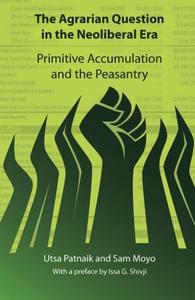
Utsa Patnaik, Sam Moyo, Issa Shivji, "The Agrarian Question in the Neoliberal Era: Primitive Accumulation and the Peasantry"
English | 2011 | pages: 98 | ISBN: 0857490389 | PDF | 2,0 mb
A compelling and critical destruction of both the English agricultural revolution and the theory of comparative advantage, upon which unequal trade has been justified for three centuries, this account argues that these ideas have been used to disguise the fact that the North-from the time of colonialism to the present day-has used the much greater agricultural productivity of the South to feed and improve the living standards of its own people while impoverishing the South. At the same time, the imposition of neoliberal "reforms" in the African continent has led to greater unemployment, spiraling debt, land and livestock losses, reduced per capita food production, and decreased nutrition. Arguing that political stability hangs in the balance, this book calls for labor-intensive small-scale production, new thinking about which agricultural commodities are produced, the redistribution of the means of food production, and increased investment in rural development. The combined effort of African and Indian scholarly work, this account demands policies that defend the land rights of small producers and allow people to live with dignity.
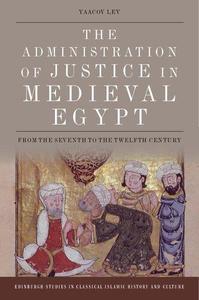
The Administration of Justice in Medieval Egypt: From the 7th to the 12th Century By Yaacov Lev
2020 | 312 Pages | ISBN: 1474459234 | PDF | 2 MB
This book shows how political and administrative forces shaped the way justice was applied in medieval Egypt. It introduces the model that evolved during the 7th to the 9th centuries, which involved four judicial institutions: the cadi, the court of complaint (mazalim), the police/shurta (responsible for criminal justice) and the Islamized market law (hisba) administrated by the market supervisor/muhtasib. Literary and non-literary sources are used to highlight how these institutions worked in real-time situations such as the famine of 1024-1025, which posed tremendous challenges to the market supervisors in Cairo. The inner workings of the court of complaint during the 11th-12th century Fatimid state are revealed through array of documentary sources. Further, non-Muslim communities, their courts and their sphere of responsibilities are treated as integral to how justice was dispensed in medieval Islam. Documentary sources offers significant insights into these issues and illuminate the scope and limits of non-Muslims self-rule/judicial autonomy. In sum, the book shows that the administrative and political history of the judiciary in medieval Egypt implicitly and explicitly illuminates broader questions about religious and social forces that shaped the lives of medieval people in the Middle East, Muslims and non-Muslims alike.
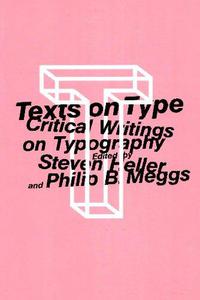
Texts on Type By Steven Heller (editor), Phillip B. Meggs (editor)
2001 | 288 Pages | ISBN: 1581150822 | PDF | 15 MB
Spanning the 20th century, with emphasis on the 1940s to the present, this collection will be necessary reading for all design students and faculty. Students and teachers of graphic design will enrich their understanding of 20th century type design and typography with this unique anthology. Contained in this volume are more than 50 important, known and rare texts by critics, historians, and type designers about the history, aesthetics, and practice of type design and typography. An invaluable addition to any school course on type theory and practice, the book contains heretofore unprinted essays by major type masters, including W.A. Dwiggins, Hermann Zapf, and Paul Rand, as well as critical analyses of vintage and contemporary type and type design. A supplement to the successfulLooking Closerseries, the book specifically pinpoints those texts that will increase the common knowledge of typographic history and criticism. 25 B&W Illustrations
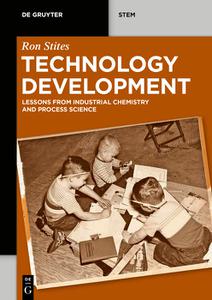
Technology Development
by Ron Stites
English | 2022 | ISBN: 3110451719 | 182 pages | True PDF EPUB | 8.85 MB
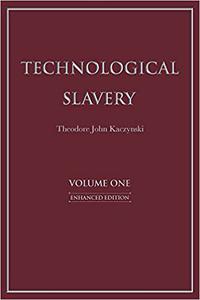
Theodore John Kaczynski PhD, "Technological Slavery: Enhanced Edition "
English | ISBN: 1944228039 | 2022 | 355 pages | PDF | 11 MB
Logical, lucid, and direct, Technological Slavery radically reinvigorates and reforms the intellectual foundations of an age-old and resurgent world-view: "Progress" is a myth. Wild nature and humanity are fundamentally incompatible with technological growth. In Technological Slavery, Kaczynski argues that: (i) the unfolding human and environmental crises are the direct, inevitable result of technology itself; (ii) many of the stresses endured in contemporary life are not normal to the human condition, but unique to technological conditions; (iii) wilderness and human life close to nature are realistic and supreme ideals; and, (iv) a revolution to eliminate modern technology and attain these ideals is necessary and far more achievable than would first appear. Drawing on a broad range of disciplines, Kaczynski weaves together a set of visionary social theories to form a revolutionary perspective on the dynamics of history and the evolution of societies. The result is a comprehensive challenge to the fundamental values and assumptions of the modern technology-driven world, pinning the cause of the rapidly unfolding catastrophe on technology itself, while offering a realistic hope for ultimate recovery. Note: Theodore John Kaczynski does not receive any remuneration for this book.
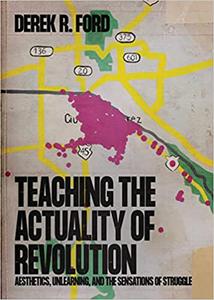
Derek R Ford, "Teaching the Actuality of Revolution: Aesthetics, Unlearning, and the Sensations of Struggle"
English | ISBN: 1088071694 | 2023 | 158 pages | PDF | 7 MB
Exploring the nexus between aesthetics, pedagogy, and politics illustrates the central role education plays in reproducing injustice and inhibiting confidence in revolutionary struggle. Demonstrating how capitalism and its attendant forms of oppression are not merely cognitive but perceptual, Derek R. Ford proposes that revolutionary education demands the production of aesthetic experiences through which we sense the possibility and actuality of alternative worlds. In response to this pressing task, Ford develops a praxis of teaching and a pedagogy of unlearning that, in our current conjuncture, creates conditions for encountering what Jennifer Ponce de León calls "an other aesthetics." Mapping contemporary capital as a perceptual ecology of structures, social relations, beliefs, and feelings, Teaching the Actuality of Revolution provides an extensive new set of concepts, practices, and readings for revolutionaries to better plan, enact, reflect on, and refine our organizing efforts.
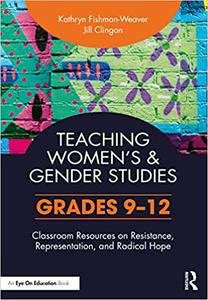
Jill Clingan, "Teaching Women's and Gender Studies"
English | ISBN: 1032344725 | 2022 | 216 pages | PDF | 3 MB
Incorporate women's and gender studies into your high school classroom using the powerful lesson plans in this book. The authors present seven units organized around four key concepts: Why WGST; Intersectionality; Motherland―History, Health, and Policy Change; and Artivism.

Teaching Global History: A Social Studies Approach By Alan J. Singer
2019 | 230 Pages | ISBN: 0367024683 | PDF | 11 MB
This updated edition of Teaching Global History challenges prospective and beginning social studies teachers to formulate their own views about what is important to know in global history and why. This essential text explains how to organize curriculum around broad social studies concepts and themes, as well as student questions about humanity, history, and the contemporary world. All chapters feature lesson ideas, a sample lesson plan with activity sheets, primary source documents, and helpful charts, graphs, photographs, and maps. This new edition includes connections to the C3 framework, updates throughout to account for the many shifts in global politics, and a new chapter connecting past to present through current events and historical studies in ways that engage students and propel civic activism. Offering an alternative to pre-packaged textbook outlines and materials, this text is a powerful resource for promoting thoughtful reflection and debate on what the global history curriculum should be and how to teach it.

Christopher Berry-Dee, "Talking With Psychopaths and Savages: Beyond Evil"
English | 2017 | pages: 288 | ISBN: 1789461154, 1786061228 | EPUB | 0,3 mb
'Having interviewed over thirty of these twisted murderers, whose homicidal craft and skills involve: strangulation; suffocation; knifing; bludgeoning their prey to death; setting victims on fire alive; shooting; injecting with caustic agents and just about every other tortuous means of extinguishing life known to deviant man, I go further than ever before in this book by inviting you to the Gates of Hell. So this book is not for the squeamish. It will not make for a comfortable bedtime read because it is solely intended to put you inside the heads of those killers who thrive on pure evil' - from the author's introduction.


